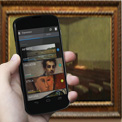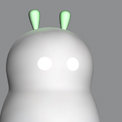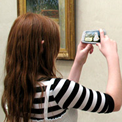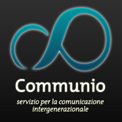Liquid Space is a service, accessed through a tablet application, that allows college students to manage, organize, and personalize their study. In this application the student can shape the digital space as he or she wishes, adapting it to his personal study methods. The service not only brings together everything a student needs for studying but also helps manage his or her academic career. [more]
Learning
Liquid Space: manage, organize, and personalize your study method
24 April 2014 – 3.31 pmMneme
14 April 2014 – 4.38 am
Mneme is a smartphone application for museum mainly for guys, aged between 20 and 30 years old, with little knowledge in the field of art. The application is designed to educate and encourage to visit the museum, trying to create a better awareness from this type of user art’s world.
[more]
diQua
10 April 2014 – 2.09 pm
diQua is a mobile app created for the celebration of the Centenary of the First World War. It allows people exploring the place and learning the history directly in an Open Air Musuem thanks to some beacons located along the area. Each beacon sends directly to the user, when he is near to the sensor, some contents related to its position. [more…]
A on Mars: Social cognition development for autistic children
29 April 2013 – 4.05 pmA on Mars is a system composed of three devices, designed to assist the therapeutic activity of autistic children or with social cognition disorders. The system follows the child in everyday life, helping him or her to understand facial expressions of the people with whom it interacts. During therapy it supports the therapist as a tool to arouse children’s empathy.[More]
Communio: Intergenerational communication in a system of volunteers.
27 April 2013 – 9.49 pmCommunio aims to restore contact between old and young people through an exchange of help in a system of voluntary work: an exchange of information and lessons for the mutual benefit and enrichment of old and young. Older people provide the skills and experience of work accumulated over their lifetimes, while young people provide a link with development and technological innovation.[More]
Lexis il mostro: Interactive game to support the skills of dyslexic children
13 April 2013 – 12.41 pmLexis il mostro is an interactive game for dyslexic children which aims to support the processes of reading, memorizing and association in a kinestethic, ludic and amusing way.
It is designed for Sifteo Cubes, a new game platform with mini-screen and proximity sensors, that allows the rise of a new experience.
[More]
pigmento: learning about colour synthesis
6 August 2011 – 10.40 am
Pigmento is an interactive table which allow kids to play and learn about the subtractive color synthesis. Over the surface there is white coarse salt, videoprojected from the bottom. The plane is divided in two concentric parts: primary colors at the borders and derivates in the centre. According to the amount of moved colors from the borders, it is possible to get all derivates, and to get back anytime. [More]
Briciole: An interactive table game for children about healthy eating
4 July 2011 – 6.37 pm
Briciole (Italian word for ‘crumbs’) aims to make children more aware of nutrition and related issues. An interactive tabletop, a tangible user interface, allows them to play and learn about food. Several mini-games let children have fun with their friends while testing what they know and maybe learning something new. Tangibility makes the interaction stronger and involves participants in a more personal way. [More]
Famfizzys: Interactive toys powered by the human body
3 May 2010 – 11.39 am The human body is rich source of expendable energy. Through their moods and behaviours the Famfizzys show children the energy they produce as they walk. The child must take care of his Famfizzy puppet in order to keep it alive and healthy. While looking after it he keeps track of his bodily activity day by day. He appreciates energy and its costs. The aim is to give a visualization of electricity. [More]
The human body is rich source of expendable energy. Through their moods and behaviours the Famfizzys show children the energy they produce as they walk. The child must take care of his Famfizzy puppet in order to keep it alive and healthy. While looking after it he keeps track of his bodily activity day by day. He appreciates energy and its costs. The aim is to give a visualization of electricity. [More]
FontUp! daily training through play
3 May 2010 – 11.26 am The number of available fonts grow continously: memorizing, recognizing and identifying them is difficult. Inspired by the Brain Training video games developed by Nintendo, FontUp is a new way to learn, an alternative method to be used in parallel with books. It uses play as a tool for memorizing complex forms using an intuitive visual approach based on comparison. [More]
The number of available fonts grow continously: memorizing, recognizing and identifying them is difficult. Inspired by the Brain Training video games developed by Nintendo, FontUp is a new way to learn, an alternative method to be used in parallel with books. It uses play as a tool for memorizing complex forms using an intuitive visual approach based on comparison. [More]
Spook: Interactive museum guide for children
3 May 2010 – 10.53 am Spook is a smart-phone application for children that aims to make their relationship with traditional museums, often designed with adults in mind, more fun and enjoyable. To make children remember the beauty of what they see and the importance of the experience, it is fundamental to give them a new point of view, a different layer of information that catches their attention. [More]
Spook is a smart-phone application for children that aims to make their relationship with traditional museums, often designed with adults in mind, more fun and enjoyable. To make children remember the beauty of what they see and the importance of the experience, it is fundamental to give them a new point of view, a different layer of information that catches their attention. [More]


